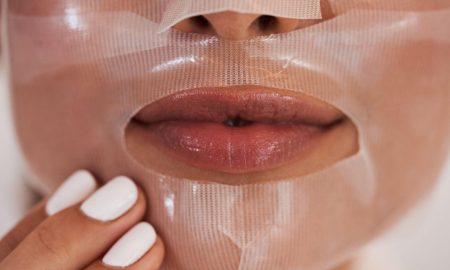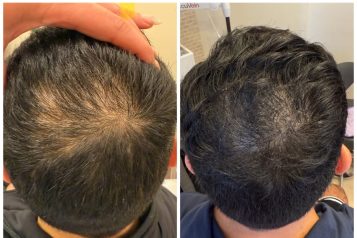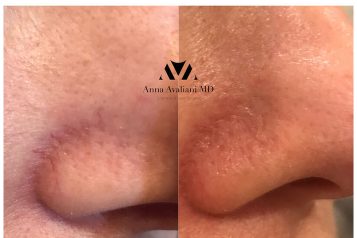 Photo Credit: Courtesy of Prostock-studio/ShutterstockA 'hip dip' is a term that refers to an indentation where the iliac crest (hip) meets the greater trochanter (thigh bone). These indentations are typically located just below the hip bone, and their depth can vary. The presence and prominence of hip dips are influenced by individual body type and fat distribution (Troell et al). While hip dips can be observed at any age, their appearance is determined by factors such as bone structure, fat deposition, and muscle mass. They are a natural and physiological aesthetic feature, which may be more noticeable in some women due to their unique body composition. Here Haute Beauty expert Dr. Samuel Lin and Iulianna C. Taritsa, BA, discusses hip dips in the context of body positivity and self-acceptance.
Photo Credit: Courtesy of Prostock-studio/ShutterstockA 'hip dip' is a term that refers to an indentation where the iliac crest (hip) meets the greater trochanter (thigh bone). These indentations are typically located just below the hip bone, and their depth can vary. The presence and prominence of hip dips are influenced by individual body type and fat distribution (Troell et al). While hip dips can be observed at any age, their appearance is determined by factors such as bone structure, fat deposition, and muscle mass. They are a natural and physiological aesthetic feature, which may be more noticeable in some women due to their unique body composition. Here Haute Beauty expert Dr. Samuel Lin and Iulianna C. Taritsa, BA, discusses hip dips in the context of body positivity and self-acceptance.
The Nature of Hip Dips
The extent of curvature around the hips differs among people, resulting in what is commonly known as hip dips—an inherent and normal characteristic. It's crucial to acknowledge that hip dips are a natural element of the body and are present regardless of age, weight fluctuations, or changes in muscle mass. While actions such as weight loss or gain and muscle building or reduction can influence overall body shape, these modifications might not necessarily eliminate hip dips, though they could affect their visibility.
It's essential to emphasize that hip dips are not a defect or flaw; rather, they constitute a component of the inherent aesthetic diversity found in human bodies. While they may be more conspicuous in specific individuals, particularly women, due to their unique body compositions, they are not indicative of any health issues or abnormalities.
Concerns and Distress
For many individuals, the appearance of hip dips is a minor aspect of their physical appearance. However, in some cases, hip dips can lead to feelings of distress, particularly when wearing tight-fitting or contoured clothing (Wildgoose et al). People who experience such discomfort may seek solutions to address their concerns.
 Photo Credit: Courtesy of Guryanov Andrey/Shutterstock
Photo Credit: Courtesy of Guryanov Andrey/Shutterstock
Consulting with Experts
To address distress related to hip dips, individuals have the option of consulting with board-certified plastic and reconstructive surgeons. These professionals possess the expertise to assess individual cases and suggest suitable solutions (Brunton et al). Plastic surgeons commonly encounter patients who express dissatisfaction with their hip shape and seek guidance on potential interventions.
Surgical Interventions: Options and Considerations
For women who find hip dips distressing and cannot achieve desired results through physical exercise, there are several surgical options available. These procedures include liposuction, fat transfer, and the use of silicone implants or custom-made implants. Each method has its benefits and considerations, which need to be discussed with a board-certified plastic and reconstructive surgeon (Troell et al). Factors such as risk profile and desired final appearance will influence the choice of procedure.
Choosing the Right Path
Ultimately, the decision to undergo surgical intervention for hip dips is a personal one. It's important to consult a qualified plastic surgeon who can provide tailored recommendations based on individual needs and preferences. By engaging in a thorough consultation, individuals can gain a clear understanding of the available options and make an informed decision about the best course of action to achieve their desired appearance.
References
Brunton G, Paraskeva N, Caird J et al. . Psychosocial predictors, assessment, and outcomes of cosmetic procedures: a systematic rapid evidence assessment. Aesthetic Plast Surg. 2014;38:1030-1040.
Troell, Robert J, Barry Eppley, and Shahin Javaheri. “Evolving Clinical Experiences in Aesthetic Hip Implant Body Contouring.” Aesthetic surgery journal 42.8 (2022): 516–530. Web.
Wildgoose P, Scott A, Pusic AL, Cano S, Klassen AF. Psychological screening measures for cosmetic plastic surgery patients: a systematic review. Aesthet Surg J. 2013;33:152-159.
For more information, visit Dr. Samuel Lin's social media:





















